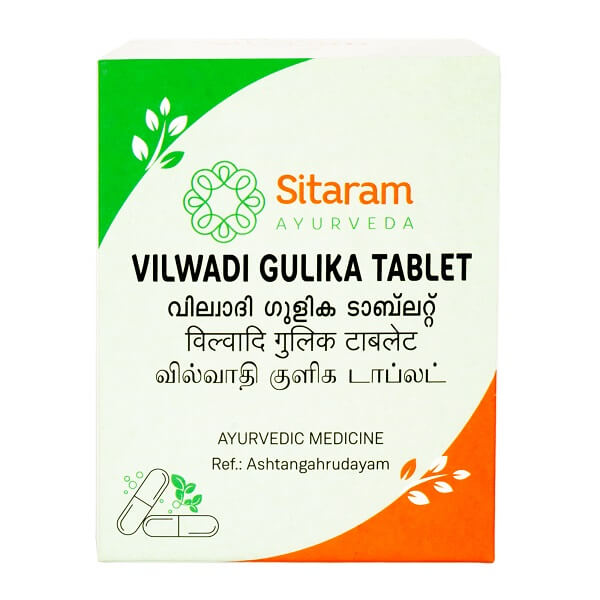Skip to product information

Vilwadi Gulika is a classic formulation which is an indispensable part of ‘Vishachikitsa’ in Ayurveda. Indian Bael, Holy Basil, Indian Spikenard, Indian Valerian, Dry ginger and Turmeric are the key ingredients in this potent detoxifying combination. Repeated processing in goat’s urine makes the formula quick-acting. It effectively flushes out internal and external toxins, purifies the blood and restores metabolism.
Gutikas are solid dosage forms in which the therapeutic effects of herbs and roots are concentrated into handy pills. These are conveniently sized and easy to carry around. Vilwadi Gulika tablets are versatile and can be used to achieve different results through a variety of adjuvants.

vilwadi gulika tablets 60 nos
₹270.00
Reliable shipping
Flexible returns